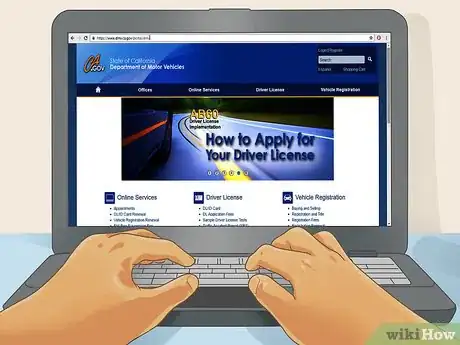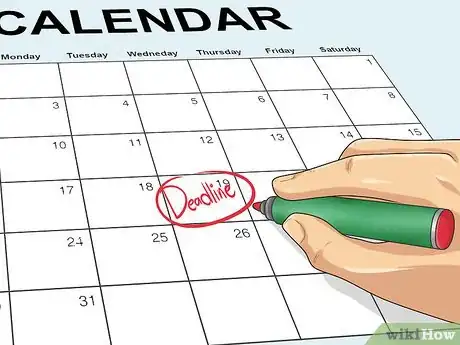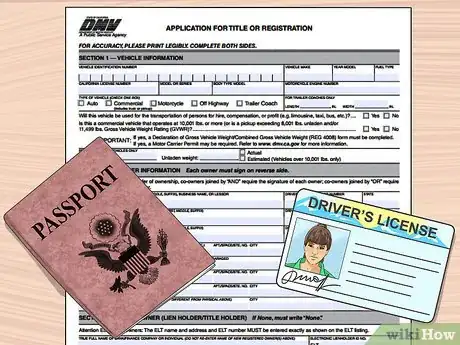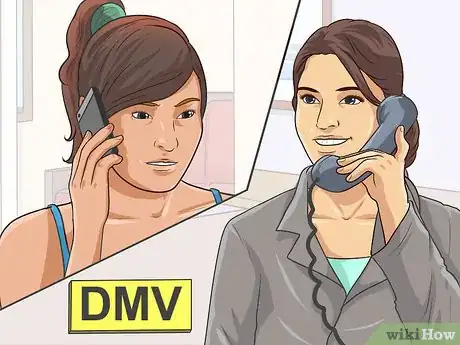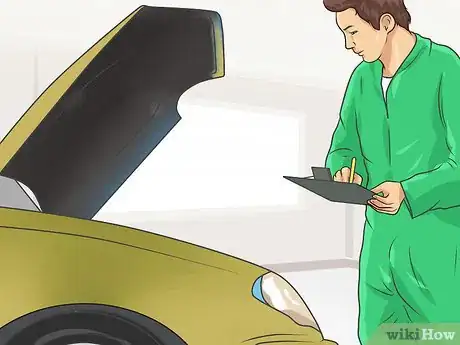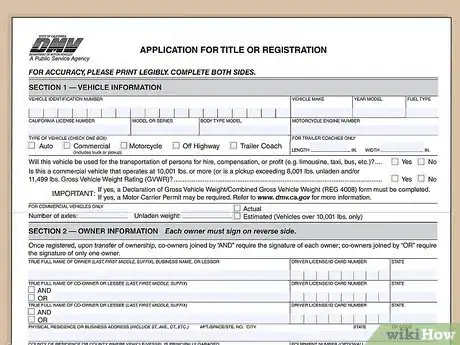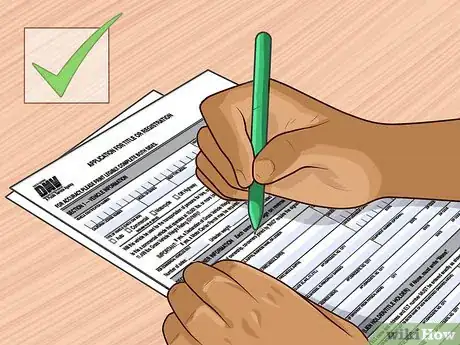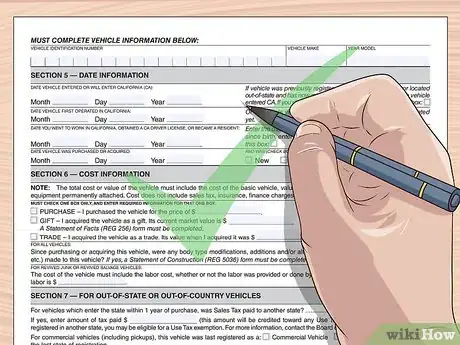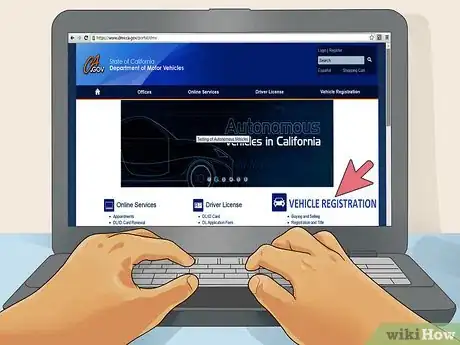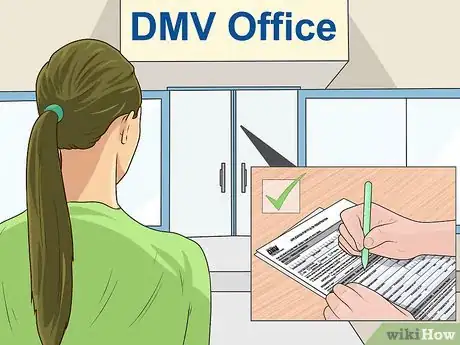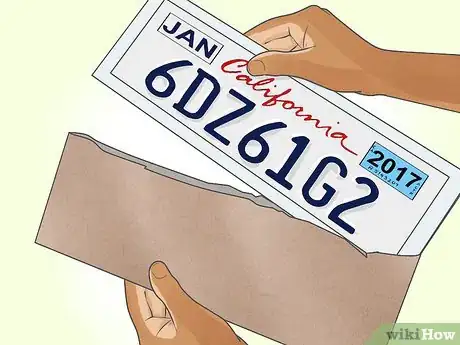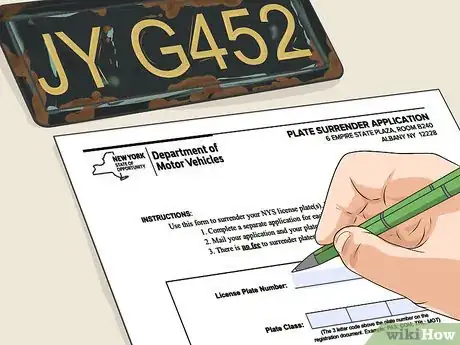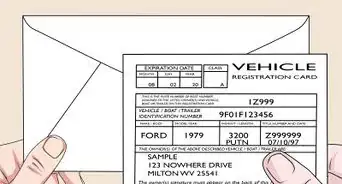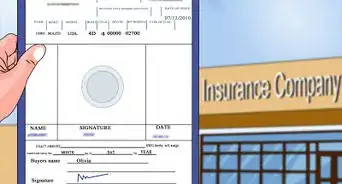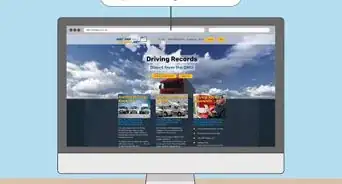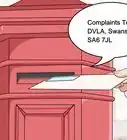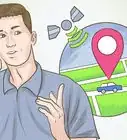This article was co-authored by Simon Miyerov. Simon Miyerov is the President and Driving Instructor for Drive Rite Academy, a driving academy based out of New York City. Simon has over 8 years of driving instruction experience. His mission is to ensure the safety of everyday drivers and continue to make New York a safer and efficient driving environment.
There are 15 references cited in this article, which can be found at the bottom of the page.
This article has been viewed 277,928 times.
If you move to a new state, you will usually need to register your car in that state, if you own and drive one. Each state has its own rules and regulations regarding how soon a car must be registered and what documentation is required to complete the process. There will also be fees involved. Register a vehicle after moving by obtaining a new driver's license and gathering all of the paperwork and insurance information required to get new license plates for your car. Make sure you are being legal while doing this.
Steps
Gathering the Necessary Information
-
1Contact your new state’s Department of Motor Vehicles. Some states may call the regulating agency the Department of Motor Vehicles (DMV), the Registry of Motor Vehicles (RMV), the Department of Transportation (DOT), the Motor Vehicle Bureau, or some other similar name. Do a quick Internet search for the name of your state and “car registration,” and you should find the information you need to get to their website.
- For example, if you live in California, you will find the website for the California Department of Motor Vehicles at www.dmv.ca.gov.[1]
- If you have just moved to New Hampshire, the agency is the Division of Motor Vehicles.[2]
- In Massachusetts, for example, the office is the Registry of Motor Vehicles.[3]
-
2Find out about your deadline. When you move into a new state, you generally must register your car in the new state within a certain time frame. This may be as short as 30 days or less.[4]
- For example, the website for the Washington State Department of Licensing says that you must register your car in the state within 30 days of moving.
- In many states, you must get a new driver’s license within your new home state either as part of registering the car or before you can register the car.
Advertisement -
3Gather the information and documents you will need to register your vehicle. Each state will have different requirements for registering your vehicle. When you find the website for your new DMV, you should be able to find a list of requirements for registration. Some of the most common requirements include the following:
- Your identification. You will need to demonstrate some government-issued identification that shows that you match the owner of the vehicle. This may be your driver’s license, passport, or some other state-issued identification card.[5]
- Proof of ownership. You will most definitely need to provide some proof that you are the owner of the vehicle. This is most likely going to be the Title Certificate, although you may be able to present your registration from your previous state.[6] If you still owe money on a loan, the lender probably is holding the certificate of title. You will at least want to check with the DMV on how to proceed in this case. You can probably get a certificate or statement from the lien holder to verify title ownership.[7]
- Odometer disclosure statement. In some states, you merely need to provide the odometer reading on your own. In other states, you may need to take your vehicle to a state-approved location and have an odometer reading certified.[8]
- Emissions disclosure statement. Several states, most notably California, require that your car must pass an emissions test before you can register it. Even if you passed such a test in your prior state, you must get a new certification if you move into California.[9]
- Bill of sale. Particularly if you have purchased your car recently, you may need to show some extra proof of purchase.
-
4Get proof that your vehicle is insured. Contact either the DMV or your own insurance company to find out what form of proof is required for a vehicle registration. Your insurance company may have a simple form or certificate that they can send you. You may need to have a particular DMV form stamped by your insurance company. Plan ahead, because getting this paperwork may take a few days.
-
5Get your vehicle inspected as required. In some states, you may need a cursory safety inspection, while other states will require a multi-stage inspection that includes both vehicle operation and emissions or smog certification. Find out your state’s requirements and leave yourself enough time to get it done.[10]
- When your car passes each stage of the inspection, you should get a certificate of some sort. Make sure that you have this available for the registration.
Completing the Registration Form
-
1Print the form or get a copy. If you can access the form online, download and print it at home. If this is not a possibility, you would then need to visit the DMV office to get a registration application form. In either case, make sure that you get the correct form. The form that you need to register a vehicle that is coming in from another state might be different than the form for registering a newly purchased vehicle. If you have questions, call the DMV to ask.
- For example, if you are registering a vehicle in California, you will need their Form REG 343, which is titled, “Application for Title or Registration.”
-
2Fill out the form completely. Read over the form carefully before you begin, to make sure that you complete the portions that apply to you. In some states, a single form will be used for multiple purposes.
- For example, if you are moving into New York and wish to register your vehicle, the form you use is titled, “Vehicle Registration/Title Application.” The same form is used to register your vehicle, renew or change a registration, replace a lost or damaged registration, title certificate or license plates, get a title, or transfer your license plates. Be sure that you mark the correct boxes.[11]
-
3Complete the portions of the form that apply to your registration. If you are completing the form online, you may be able to type your information directly onto the form and then print the completed, typed form. Otherwise, you should print the form and complete it neatly in ink. If you leave out any information, or if your writing is illegible, your application may be denied, delayed, or incorrect.[12]
-
4Provide the identifying information about the vehicle. You will need to provide the year, make and model of the car. You will also need to provide the vehicle’s complete Vehicle Identification Number (VIN). Be careful to provide this accurately. If you make mistakes on the application form, your final registration may include errors. These can be difficult to correct later.[13]
- You can usually find the VIN on a small plate just under the windshield on the driver’s side of the dashboard. Be sure to copy all numbers and letters of the VIN carefully.
Submitting Your Application
-
1See if you can register online. In many states, you may be able to apply for registration through the DMV website. This can save you a lengthy visit to the DMV office. In other states, you may be able to begin the process online, but then take care of the rest with a briefer DMV visit.
- For example, in New York you can use the “E-Z Visit” service. This service will let you begin your application online. As a result, this will reduce the time you need to spend at the registry office.
- As another example, Pennsylvania will let you renew your registration online, as long as you meet certain qualifications.[14]
- You will want to check your own state’s site to learn your options.
-
2Register in person. Find out where the nearest DMV office to your home is located. Most states’ websites provide a list of locations. You will want to find the one that is closest or most convenient to you. Some states also allow you to make appointments online. This would reduce your waiting time when you go to register your vehicle.
- For example, the Nevada Department of Motor Vehicles has an interactive map of the state that illustrates the DMV office locations. When you select the one nearest you, a pop-up box provides you with the address, telephone number and hours of operation for that office. You can also click on a link for directions.[15]
- Take your completed forms and payment for all required fees to the office.
-
3Doublecheck the fee payment. In most states, the registration fee is based on the value of the vehicle that you are registering. You may not be able to plan for the exact amount of the registration fee. Call the office to find out what options you may have for payment. Most DMV offices will accept cash, checks, money orders or credit cards. You should find out which forms are accepted in your new state and try to estimate the amount you will need to pay.
- For example, the Nevada DMV provides a link on its website for a fee estimate. If you provide your vehicle’s VIN, make, model and year, the link can give you an estimate of the registration fee. Be aware that even this link is only an estimate, and the final fee will not be set until you visit the DMV office.[16]
Taking the Final Steps
-
1Ask how long your registration lasts. Each state sets its own limits for vehicle registration. After a few years, you will need to reapply or at least renew your registration. The renewal process is usually easier and quicker than the initial registration. Many states will allow you to renew your registration on line every year or every 2 years.
-
2Receive your new license plates. Some states will give you a temporary registration and mail your plates in 2 to 4 weeks. Other states will have them ready for you immediately. Be sure that you do not leave the DMV office without understanding their process for this.
-
3Return your old plates back to the state you moved from. Some states will charge you a fee if you do not return your license plates.
- New York, for example, requires that you return your old plates when you register the vehicle in a new state. You would need to print and complete the Plate Surrender Application, and then return that completed form with your old plates.[19]
- Call the DMV or MVA in your old state and find out where to send them. Your old state's agency might also have this information on their website.
Community Q&A
-
QuestionIf I finance a vehicle in NJ and move to MA, am I obligated to keep the NJ plates until I finish paying off my vehicle? How would that work?
 Community AnswerNo, you are not obligated to keep the NJ plates. In fact, you are probably required to register the car in Mass. and get new plates. This will not affect your financing or payments in any way. You are still the owner, and you still owe whatever you owe. The registration and the license plates just show that you are now a resident of a new state.
Community AnswerNo, you are not obligated to keep the NJ plates. In fact, you are probably required to register the car in Mass. and get new plates. This will not affect your financing or payments in any way. You are still the owner, and you still owe whatever you owe. The registration and the license plates just show that you are now a resident of a new state. -
QuestionIf I move to another state a few months after registering it in one state, will any of my fee be reimbursed after I register in the new state?
 Community AnswerDepends on the state you are currently registered in; check with your DMV. CA, for example, does not prorate/reimburse registration fees.
Community AnswerDepends on the state you are currently registered in; check with your DMV. CA, for example, does not prorate/reimburse registration fees. -
QuestionI owe back registration in CA, but I'm moving to NC. What must I do to register my car in NC?
 Community AnswerI have never heard of someone "owing" back registration. I never thought a state agency accepted IOU's. Nevertheless, I do not believe that will affect your registration in NC. If you are now a resident of NC, you need to register the car there. If you owe money to CA, you will continue to owe it, and they will do whatever it is that they do to try to collect it from you. But you don't need anything from CA in order to register your car in NC. Visit the NC Dept. of Transportation website for everything you need about registering your car. See https://www.ncdot.gov/dmv/vehicle/.
Community AnswerI have never heard of someone "owing" back registration. I never thought a state agency accepted IOU's. Nevertheless, I do not believe that will affect your registration in NC. If you are now a resident of NC, you need to register the car there. If you owe money to CA, you will continue to owe it, and they will do whatever it is that they do to try to collect it from you. But you don't need anything from CA in order to register your car in NC. Visit the NC Dept. of Transportation website for everything you need about registering your car. See https://www.ncdot.gov/dmv/vehicle/.
References
- ↑ https://www.dmv.ca.gov/portal/dmv/detail/vr/vr
- ↑ https://www.nh.gov/safety/divisions/dmv/registration/vehicle.htm
- ↑ https://www.mass.gov/orgs/massachusetts-registry-of-motor-vehicles
- ↑ http://www.dol.wa.gov/vehicleregistration/moving.html
- ↑ https://dmv.ny.gov/registration/register-and-title-vehicle-or-trailer.
- ↑ https://dmv.ny.gov/registration/register-and-title-vehicle-or-trailer
- ↑ https://www.dmv.org/ca-california/car-registration.php
- ↑ http://www.dol.wa.gov/vehicleregistration/moving.html
- ↑ http://www.dmv.org/ca-california/smog-check.php
- ↑ https://dmv.ny.gov/registration/register-and-title-vehicle-or-trailer.
- ↑ https://dmv.ny.gov/forms/mv82.pdf
- ↑ https://dmv.ny.gov/forms/mv82.pdf
- ↑ https://dmv.ny.gov/forms/mv82.pdf
- ↑ https://www.dot3.state.pa.us/vehicle_services/vrlogin.jsp#top?20160427172631755=20160427172631755
- ↑ http://www.dmvnv.com/locat.htm
- ↑ https://dmvapp.nv.gov/dmv/vr/vr_estimate/vrestimationinput.aspx
- ↑ https://dmvapp.nv.gov/DMV/Application/DMVPortal/Pages/Default.aspx?https://dmvapp.nv.gov/DMV/VR/RegRenewal/VRRenewal/VR_Ren_Input.aspx
- ↑ http://www.dmv.org/ma-massachusetts/registration-renewal.php
- ↑ https://dmv.ny.gov/registration/surrender-vehicle-plates-dmv
About This Article
To register a vehicle after moving, start by visiting the website for your state's Department of Motor Vehicles. Then, locate the list of requirements for registering a new vehicle on their website, which may include things like personal identification, proof of ownership, a bill of sale, and an emissions disclosure statement. Then, gather everything you need and fill out a registration application, which you should be able to access and print online. When you're finished with your application, you'll need to visit your local Department of Motor Vehicles and register in person, unless your state allows you to register online. To learn how to return your old license plates, scroll down!
